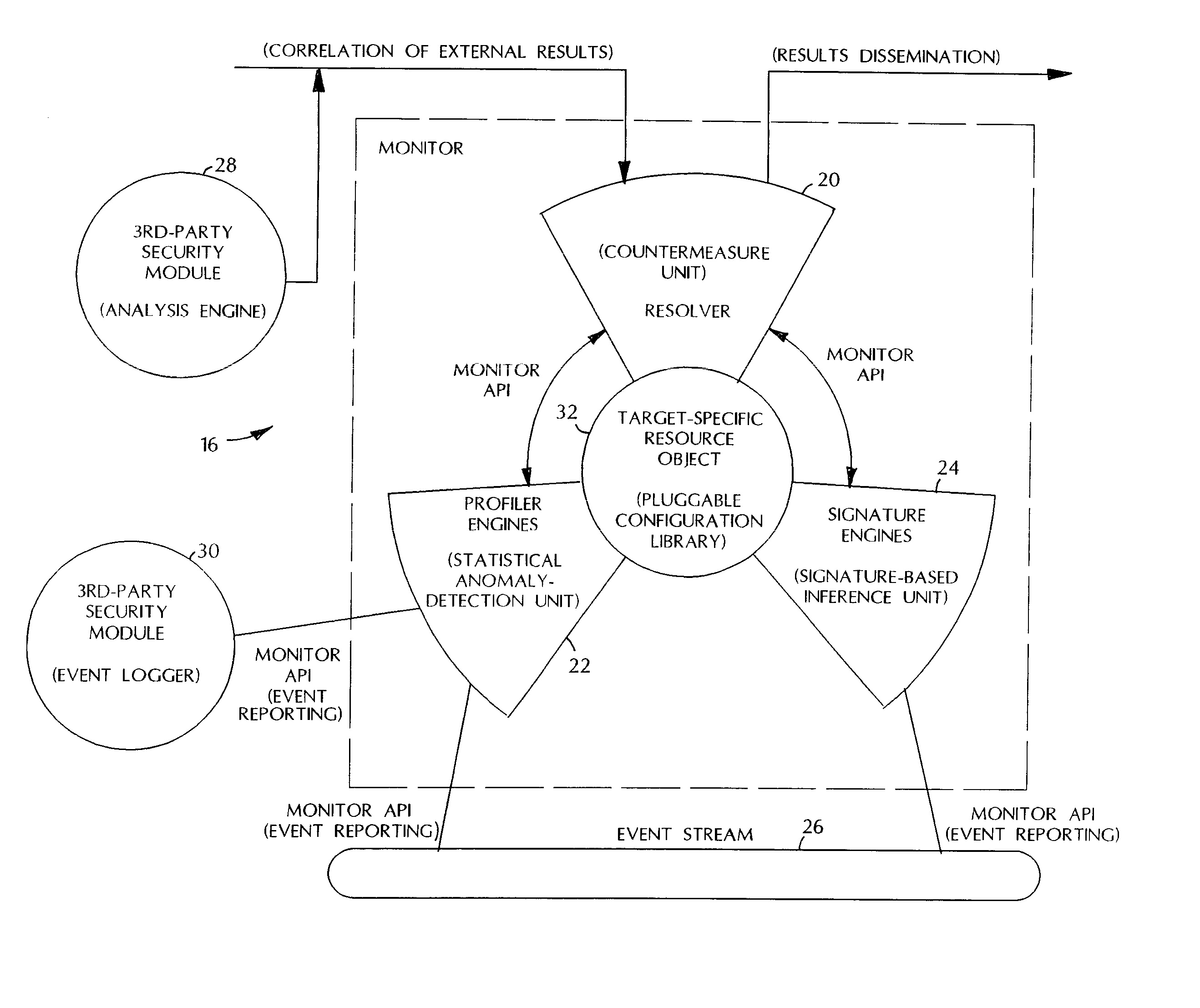On March 20, 2019, the Court of Appeals for the Federal Circuit ruled in SRI Int’l, Inc. v. Cisco Sys., Inc.,[1] in which claims directed to network intrusion were found patent-eligible under 35 U.S.C. §101. While the ruling is a welcome sign of patent-eligibility, the ruling itself is convoluted in its rationale and difficult to use for analyzing future eligibility cases.
SRI owns U.S. Patent Nos. 6,484,203 (‘203) and 6,711,615 (‘615). The ‘615 patent is entitled “Network Surveillance,” and the ‘203 patent is entitled “Hierarchical Event Monitoring and Analysis.” Both are directed to solving the problem of detecting a network attack after only a few login attempts.

Claim 1 of the ‘615 patent is deemed representative:
- A computer-automated method of hierarchical event monitoring and analysis within an enterprise network comprising:
deploying a plurality of network monitors in the enterprise network;
detecting, by the network monitors, suspicious network activity based on analysis of network traffic data selected from one or more of the following categories: {network packet data transfer commands, network packet data transfer errors, network packet data volume, network connection requests, network connection denials, error codes included in a network packet, network connection acknowledgements, and network packets indicative of well-known network-service protocols};
generating, by the monitors, reports of said suspicious activity; and
automatically receiving and integrating the reports of suspicious activity, by one or more hierarchical monitors.[2]
SRI sued Cisco for patent infringement of the ‘203 and ‘615 patents. The district court, 1) denied Cisco’s motion for summary judgment based on ineligible subject matter under §101, 2) sua sponte grant of summary judgment of no anticipation under §102 in favor of SRI, 3) denied Cisco’s renewed motion for JMOL of no willfulness, and 4) granted enhanced damages and attorneys’ fees based on the willful infringement. This posting will focus only on §101 patent-eligibility analysis.
The Fed Circuit panel was composed of Judges Lourie, O’Malley, and Stoll, with Judge Stoll writing for the majority, and Judge Lourie writing in dissent. Cisco had argued that the ‘203/’615 claims were similar to those in Electric Power Grid,[3] where the claims were directed to computers being used as tools to solve a power grid problem, rather than focused on improving the functionality of computer networks. Judge Stoll differentiated Electric Power Grid from the current case. She wrote:
[T]he claimed technology “overrides the routine and conventional sequence of events” by detecting suspicious network activity, generating reports of suspicious activity, and receiving and integrating the reports using one or more hierarchical monitors.” [Further,] the claims here are not directed to using a computer as a tool – that is, automating a conventional idea on a computer. Rather, the representative claim improves the technical functioning of the computer and computer networks by reciting a specific technique for improving computer network security.
Cisco had further argued that the SRI claims merely encompassed steps that humans mentally conduct “in their minds,” thus, making the claims abstract ideas. Judge Stoll also disagreed on this point. She noted that “this is not the type of human activity that §101 was meant to exclude,” because humans cannot normally detect suspicious network intrusions and further analyze the network data in the same manner as recited in the ‘203/’615 claims. As such, the majority found the SRI claims patent-eligible subject matter under §101.
However, Judge Lourie disagreed, noting that he would have found the ‘203/’615 claims abstract ideas. He determined that the Electric Grid claims were, in fact, similar to the SRI claims, by “receiving data,” “detecting and analyzing” data, “displaying” data, “accumulating and updating” data, and “deriving” data, which are all buzzwords for merely functional of tasks performed on a computer.
The claims here recite nothing more than deploying network monitors, detecting suspicious network activity, and generating and handling reports. The detecting of the suspicious activity is based on “analysis” of traffic data, but the claims add nothing concerning specific means for doing so. The claims only recite the moving of information. The computer is used as a tool, and no improvement in computer technology is shown or claimed . . . . Finally, the majority opinion quotes from and paraphrases language from the specification that only recites results, not means for accomplishing them. The claims as written, however, do not recite a specific way of enabling a computer to monitor network activity.
While not agreeing with his holding, Judge Lourie does raise valid issues with the majority’s rationale to uphold patent-eligibility under §101. The majority does not explain how the “merely computer function” buzzwords in the SRI claims can amount to eligible subject matter, while the Electric Grid wording did not. In short, while this case does find claims eligible under §101, the opinion’s usefulness to eligibility practice is somewhat muted.
[1] ___F.3d___ (Fed. Cir. 2019), affirming-in-part, vacating-in-part, and remanding, 179 F. Supp. 3d 339 (D. Del. 2016).
[2] As the court noted, the only difference between claims 1 of the ‘615 patent and the ‘203 patent is that the “detecting” clause of the ‘615 patent allows for network traffic data selected from “one or more of” the enumerated categories, while the “detecting” clause in the ‘203 patent includes “network connection acknowledgements” and “network packets indicative of well-known network-service protocols.”
[3] See Electric Power Grid, LLC v. Alsom S.A., 830 F.3d 1350, 1354 (Fed. Cir. 2016).
